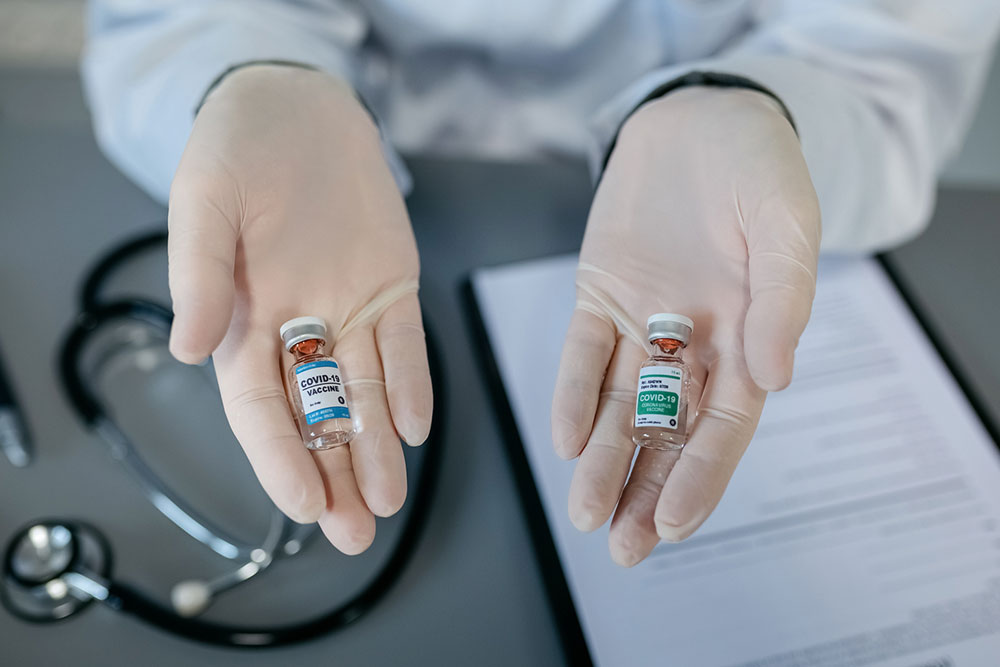Here’s what makes Novavax an alternative to mRNA vaccines

When it comes to vaccine development, two innovative approaches have taken center stage in recent years—protein subunit (Novavax) and mRNA vaccines. Both are methods of bolstering immunity against infectious diseases, each with its own set of merits and considerations. To highlight the difference between both approaches, this article explores the characteristics of COVID-19 vaccines, highlighting what makes Novavax an alternative to mRNA vaccines in helping build immunity against the disease:
Disease-specific considerations
The nature of the infectious disease in question plays a pivotal role in determining which vaccine approach is most appropriate. In situations where rapid response is essential, such as the early stages of a pandemic, mRNA vaccines, with their shorter development timelines, may offer a distinct advantage. Here, the ability to swiftly generate and distribute these vaccines was evident in the last few years. On the other hand, for a targeted adaptation to emerging variants, Novavax’s adaptable protein subunit technology can be utilized. Here, the capability to accommodate evolving viral strains makes the vaccine part of the long-term vaccination strategy.
Vaccine technology
To understand the differences and similarities between Novavax and mRNA vaccines, here are the fundamental principles underlying these vaccine technologies.
– The mRNA vaccines work by introducing a small piece of genetic material, called messenger RNA (mRNA), into the body. This mRNA contains instructions for the body to produce a harmless piece of the target pathogen’s protein. The immune system recognizes this protein fragment as foreign and mounts a response, producing antibodies that provide immunity against the actual pathogen if encountered in the future.
– Novavax, on the other hand, adopts a more traditional method known as protein subunit vaccination. This involves the production of viral protein fragments in the lab, which are then used to stimulate an immune response. In the case of Novavax, these protein fragments are derived from the virus’s spike protein, similar to what the mRNA vaccines target.
Real-world application
Clinical trials for Novavax’s vaccine have demonstrated an overall efficacy of over 90%, which is comparable to certain mRNA vaccines. Notably, Novavax’s efficacy remains robust against multiple variants of the virus.
Safety profile
Safety is paramount in immunization measures. Here, mRNA vaccines have been in use for a shorter period, and so their long-term side effects are still being studied. Common short-term side effects include soreness at the insertion site, fatigue, and mild fever. These side effects usually resolve within a few days and are generally well-tolerated. On the other hand, Novavax’s protein subunit vaccines have a longer history of use, providing a more extensive safety profile. While they can also induce mild side effects, their well-documented track record offers some reassurance for those concerned about potential adverse reactions.
Logistical considerations
The logistics of vaccine distribution can also influence the choice between Novavax and mRNA vaccines. First, mRNA vaccines often require ultra-cold storage conditions, posing logistical challenges, especially in resource-limited regions. This requirement can make transportation and distribution more complex. Novavax’s subunit vaccines are more amenable to traditional refrigeration, simplifying the logistics of storage and distribution to an extent. This can be crucial in ensuring widespread access to vaccines, particularly in areas with limited infrastructure.
Individual health considerations
Individual health conditions and personal preferences can also influence the decision regarding the type of vaccine. While both mRNA and Novavax have favorable safety profiles, specific health conditions or allergies may make one vaccine more suitable for certain individuals. Further, personal choice plays a pivotal role in vaccination decisions. Some may have more trust or confidence in one vaccine based on their familiarity or prior experiences with similar technologies.
Role of booster shots
The ongoing discussion surrounding booster shots can also be a key consideration in the choice of vaccine. Booster shots are intended to enhance and prolong the protection provided by the initial vaccine doses. Both Novavax and mRNA vaccines are under consideration for booster use. Novavax’s adaptability in targeting variants makes it a candidate for booster shots, as it can be quickly modified to address new viral strains. On the other hand, mRNA vaccines have shown robust protection against variants but may also require periodic adjustments. The choice between Novavax and mRNA in terms of booster shots may depend on the need for rapid adaptation, resource availability, and the presence of specific variants in a given region.
Global effort
Ensuring protection against infectious diseases like COVID-19 is a global effort that relies on collaboration and the diverse application of available tools. While this article has focused on the differences between Novavax and mRNA vaccines, it is essential to acknowledge other vaccine technologies and candidates in development, each with its unique strengths and considerations. Global collaboration entails sharing knowledge, resources, and expertise to combat diseases. It requires a nuanced approach, recognizing that different vaccines can complement each other in various ways. This approach ensures that diverse populations have access to the most suitable vaccines for their specific circumstances.
So, the choice between Novavax and mRNA vaccines is a complex decision that depends on multiple factors, including disease nature, urgency, logistical constraints, individual health considerations, and the evolving landscape of booster shots. Both Novavax and mRNA vaccines have demonstrated their effectiveness and offer valuable contributions to global health. Their unique characteristics make them suitable for different scenarios, underscoring the importance of a multifaceted approach to disease prevention and control.
As scientists continue to find newer solutions to infectious diseases and emerging threats, the collaboration and synergy among various vaccine technologies will remain critical in safeguarding public health. The ability to adapt and choose the right tools for the task at hand ensures better future preparedness to deal with health-related challenges and current protection of the health and well-being of populations around the world.
Sources:
- https://www.yalemedicine.org/news/covid-19-vaccine-comparison#:~:text=The%20Novavax%20vaccine%20brand%20names,vaccines%20in%20their%20early%20trials%20
- https://www.science.org/doi/10.1126/sciimmunol.adg7015
- https://www.ej-pharma.org/index.php/pharma/article/view/58
- https://www.ncbi.nlm.nih.gov/pmc/articles/PMC8548286/
- https://www.mayoclinic.org/diseases-conditions/comparing-vaccines
- https://www.who.int/news-room/feature-stories/detail/the-novavax-vaccine-against-covid-19-what-you-need-to-know
- https://www.who.int/news-room/questions-and-answers/item/coronavirus-disease-(covid-19)-vaccines
- https://www.cfr.org/backgrounder/guide-global-covid-19-vaccine-efforts









